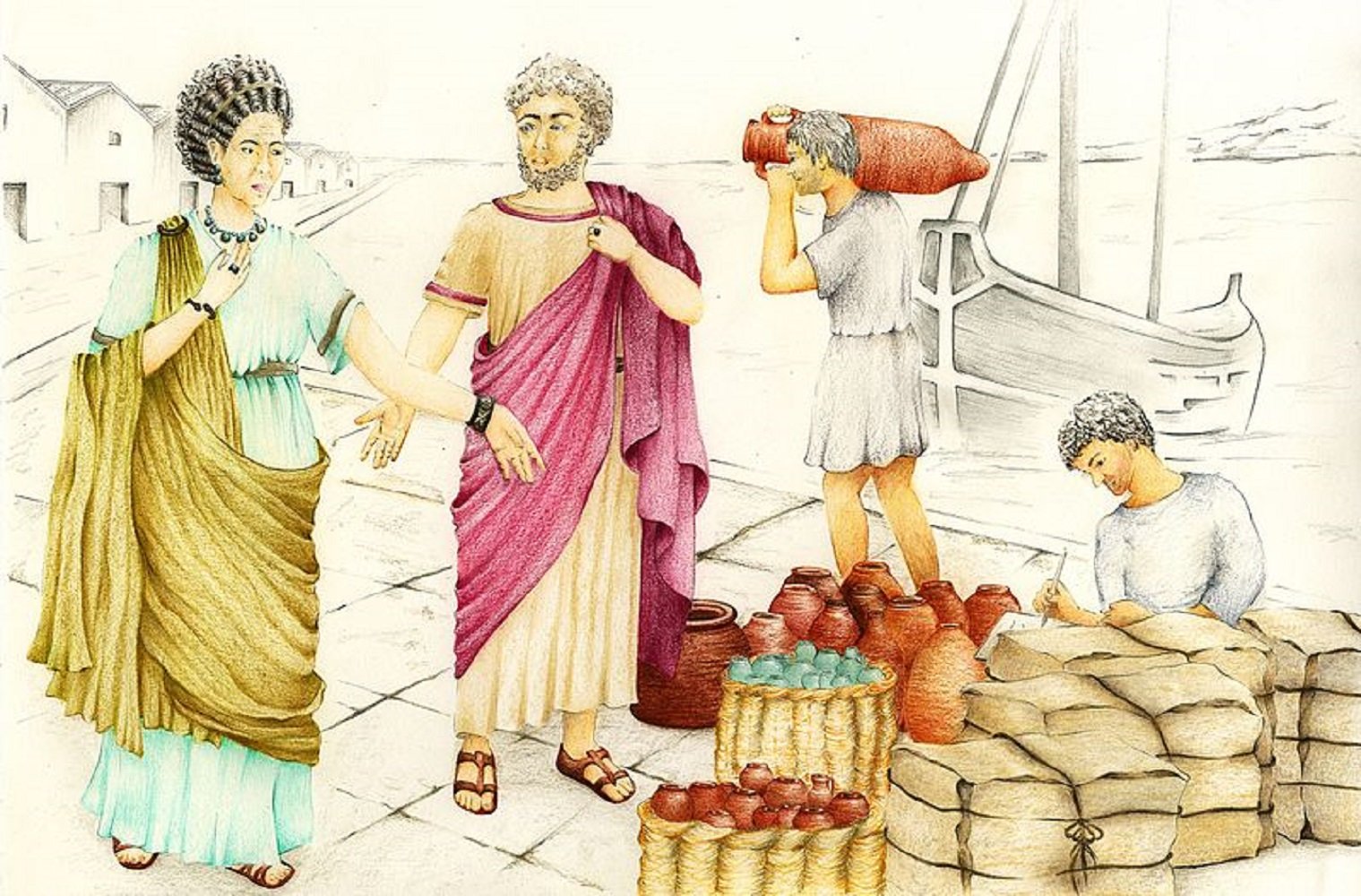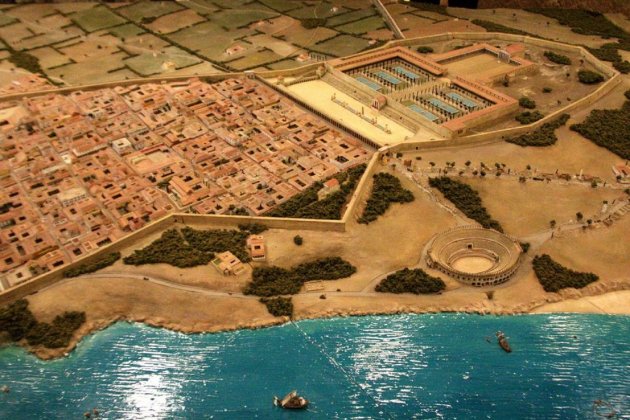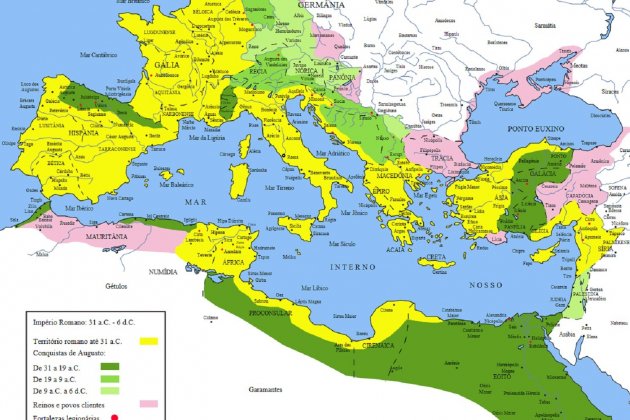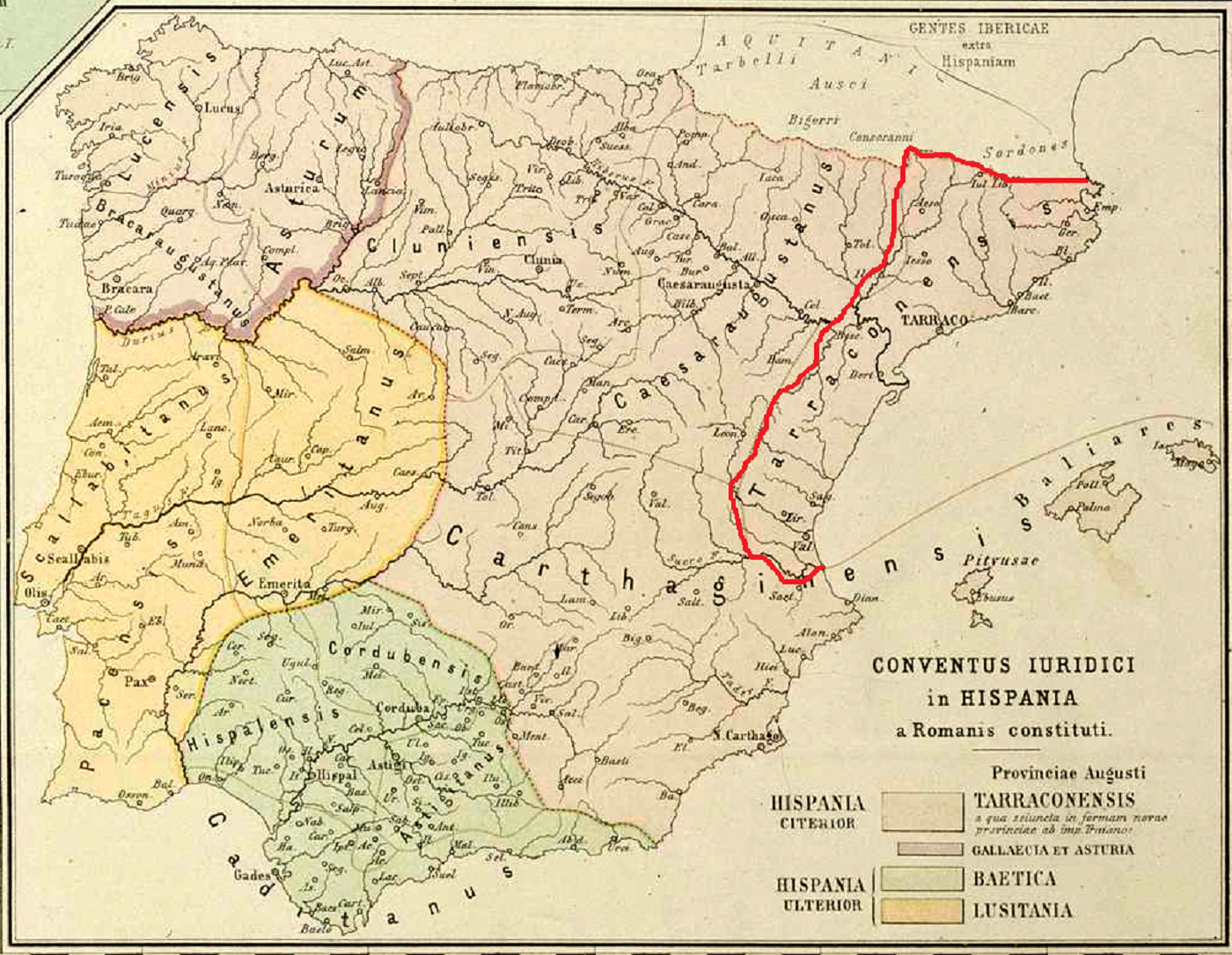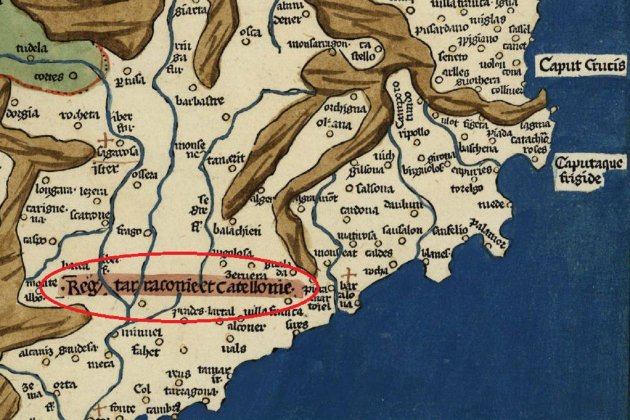Tarragona, southern Catalonia, 26 BC, Gaius Octavius Thurinus, granted power for life by the Senate and calling himself princeps civitatis ("first citizen"), arrives in the city then called Tarraco. At that time Augustus, as he would be known, was already one of the most prestigious and powerful people in Rome: he had managed to bring an end to a long period of civil wars and ended up alone at the top of the Roman military hierarchy. For two years (26 and 25 BC), Augustus, with the Cantabrian Wars as his pretext, would put geographic distance (on purpose) between himself and the Senate and would govern a very significant share of Roman affairs from Tarraco, turning it into a de facto second capital of the Roman state, the "other Rome".
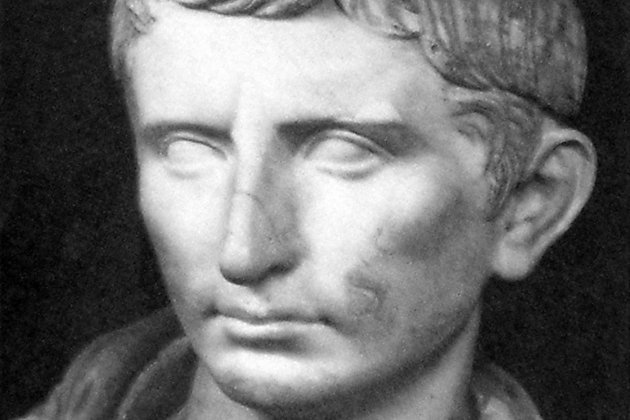
Augustus, around 30 BC. Capitoline Museum of Rome / Source: Wikimedia Commons
Who founded Tarraco?
Tarraco had been founded in 218 BC (almost two centuries before Augustus) by the Roman generals Gnaeus and Publius Cornelius Scipio during the Second Punic War (218-202 BC). The brothers Scipio's legions had landed shortly beforehand at Empúries to cut off communications between the Carthaginian vanguard and rearguard. In other words, between Hannibal's celebrated elephants, advancing unstoppably towards Rome, and Qart Hadash, modern Cartagena, the main Carthaginian military base on the Iberian peninsula. The landing of the Scipios and their legions would lead to the founding of the first and most important Roman military headquarters on the Iberian peninsula.
Were the Romans the first settlers of Tarragona?
The texts left behind by the Roman conquerors are, as it happens, precisely the ones which reveal the existence of earlier settlement on the site. They might not be the oldest, but they are the most precise. They reveal the existence of a north-Iberian city, which some sources call Kesse and others Tarakon, located, more or less, where the current Tàrraco Arena is (the former bullring). That city, which served as the capital of the north Iberian nation of the Cessetani, would vanish shortly afterwards. The texts written by the winners state that near Kesse (or Tarakon) a battle took place in which Rome's legions inflicted a crushing defeat on an alliance of Iberians and Carthaginians, which would explain this sudden disappearance.
Model of Tarraco. National Archaeological Museum of Tarragona / Source: Wikimedia Commons
The Roman camp
The Roman military camp would be the genesis of Tarraco. That original camp wouldn't be built on the site of ancient Tarakon, but on the highest nearby plateau. The first settlers of Tarraco (in its Roman foundation) would be the the conquering officers and men and a mass of suppliers for the legions (of diverse origins) who would gather around large camps: from architects to prostitutes, via carpenters, blacksmiths, stonemasons, saddlers and merchants selling clothes, food and alcohol. On the other hand, the inhabitants of Tarakon (the north-Iberian version) would be despoiled and enslaved, and the evidence of their existence would be lost to the mists of time.
The Tarraco Augustus encountered
When Augustus arrived in Tarraco (26 BC), the original camp had evolved into a city, without losing the military heart that had driven its creation. Indeed, that would probably have been the reason for Augustus' choice. It wasn't due to the local climate, which the emperor Hadrian (a century and a half later) would characterise with the quote "Tarraco civitas ubi ver aeternum est" (Tarraco, the city where spring is eternal). What attracted Augustus, general of the Roman legions, was very probably its barracks and taverns, the opposite of Rome and its palace intrigues. Paradoxically, it would be Augustus himself who would transform it to make it more akin to Rome. To turn it into "the other Rome".
Map of the Roman Republic, with Augustus' conquests for the Empire in green / Source: Wikimedia Commons
The Tarraco Augustus built
Augustus would be behind the great urban changes to Tarraco: the military quarter would be transformed into the political, administrative and religious centre of the city and the province: Hispania Citerior, which spanned the northern half of the Iberian peninsula. On that site the Provincial Forum was built, the great building which brought together all the branches of the government of the province. And its adjoining spaces: the cult sites (the temples) and the circus (the stadium where chariot races were held). A curious concentration of politics, religion and entertainment which explains the architecture of power of that society. And which explains that the Roman legacy goes beyond their language.
Augustus' Tarraco
The process of urban transformation of the city has a curious relationship with Augustus' political career. He arrived in Tarraco as a true hero: he'd just dealt with the colourful Mark Antony and Cleopatra, rivals who he'd deftly presented as the great threat to the Republic. And, very conveniently for his interests, he had remained the only general who counterbalanced the Senate. In Tarraco, he would plan his definitive act: the assault on power which would turn him into the first emperor in the history of Rome. Tarraco would be his winter quarters. And the urban transformation of the city (charged to the public treasury, naturally) would be the marketing tool to carry him to power.
Map of Roman Spain by Heinrich Kiepert (mid-19th century), Conventus Tarraconensis highlighted / Source: National Library of Spain
The Tarraco Augustus left behind
Tarraco would come out of this greatly strengthened. It would consolidate its position as the great Roman city on the Iberian peninsula with unstoppable economic and demographic growth. It would abandon, once and for all, its emphasis on barracks and taverns and the local elites (a curious fusion between pro-Roman north Iberian oligarchs and the administrative and mercantile classes native to the metropolis) would invest large quantities from their own pockets (with the clear aim of obtaining personal political benefits) in the construction of all manner of urban features; naturally inspired by the Eternal City. Two centuries later it would reach the figure of 30,000 inhabitants which would place it among the empire's great urban centres.
The end of Rome
Later would come the great crises of the 3rd and 4th centuries anticipating the disintegration of the Roman empire. The emperor Constantine, desperately searching for a means of social cohesion to avoid the inevitable, would make Christianity the official religion (313 AD) and Tarraco would become the seat of the diocese of Conventus Tarraconense (a provincial subdivision which outlines, surprisingly precisely, the current map of Catalonia and the northern half of Valencia). During this period, Tarraco would be, possibly, a pioneering city in terms of the phenomenon of gentrification: it would turn into a city-palace inhabited almost exclusively by the ruling classes.
Map of Catalonia / Source: Map Library of Catalonia
The principality of Tarragona
Tarraco's status as a capital, be it of a province, be it as a de facto capital (or at least co-capital) of the empire, as hinted at during Augustus's stay, would give it a certain prestige for ever more. Even during the four centuries it was abandoned for during the period of Arab domination of the peninsula (718-1116). When the independent count Ramon Berenguer III retook it, he would restore the archdiocese. And he created the principality of Tarragona, which he gave to the Norman warrior Robert d'Aguiló. That principality would come to a premature end after a bloody local civil war between the supporters of the d'Aguiló family and those of archbishop Tort.
The kingdom of Tarragona
But later sources often mention "the kingdom of Tarragona". From 1150 onwards, the independent counts of Barcelona were also kings of Aragon, a title that never had any effective power in Catalonia, but which gave the Berenguers (the line of Barcelona counts) a certain weight in their frequent disputes with the Catalan barons. And that's when the question arises: if Aragon had ended up being swallowed by Castille and Navarra before the dynastic union with Barcelona (which saved it from disappearing), would the independent county of Barcelona have become, inevitably, the kingdom of Tarragona.

